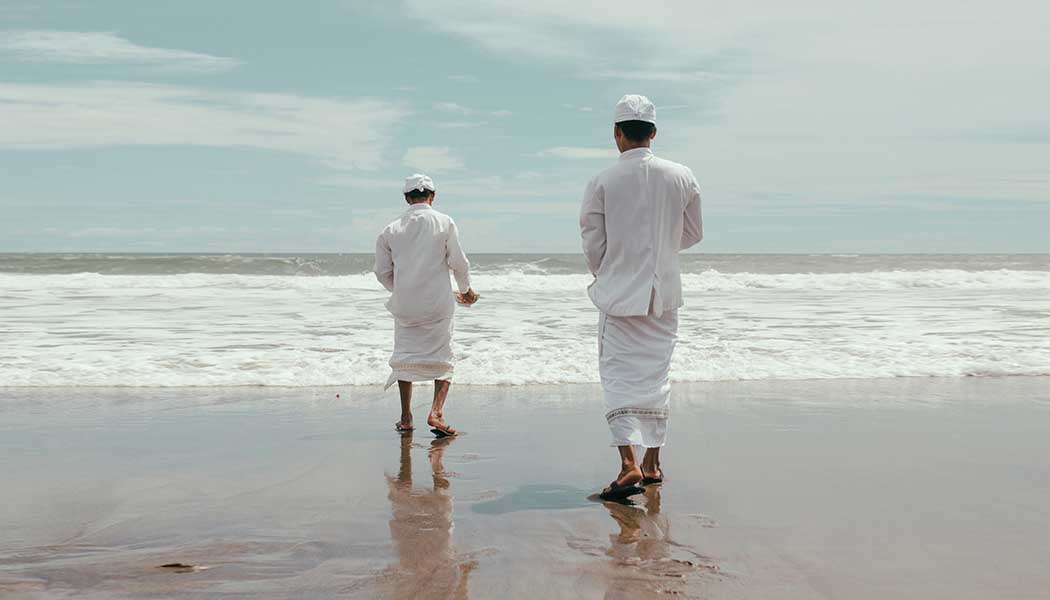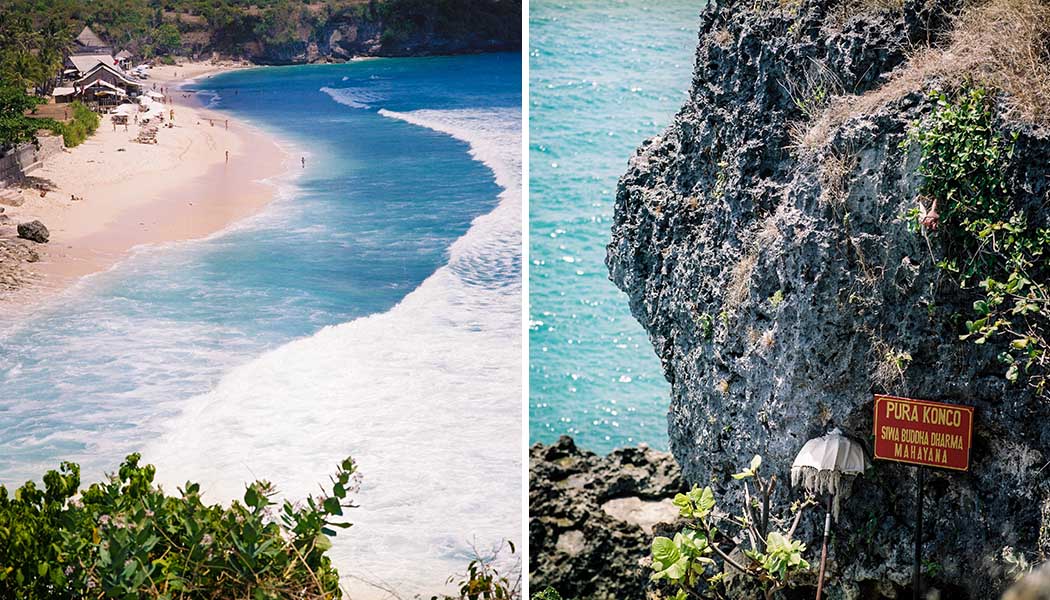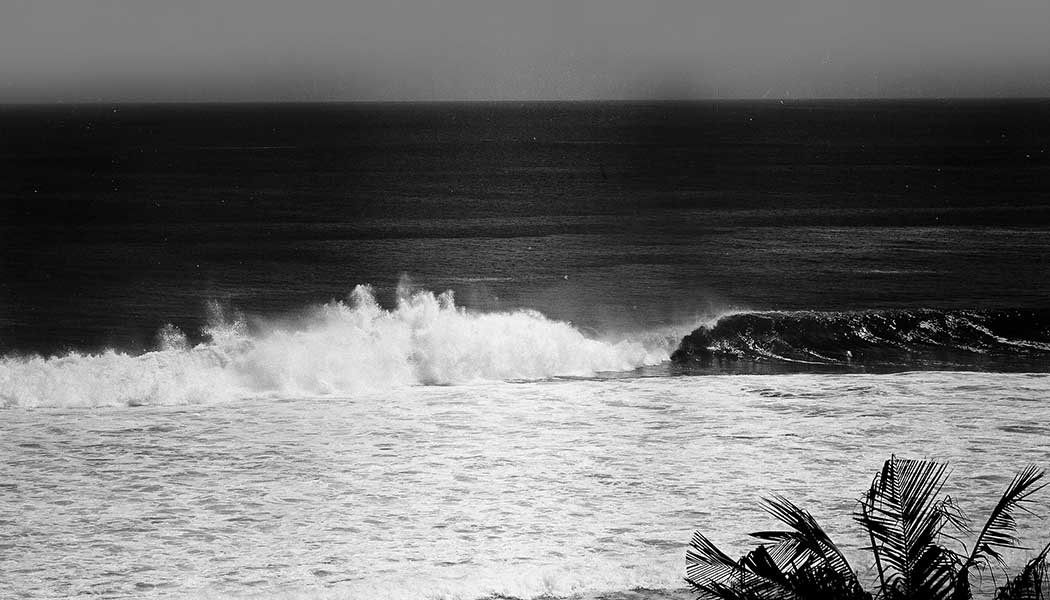On the eve of Nyepi, Bali’s silent day, Andrew E. Hall contemplates what this island is all about, where it’s been, where it’s going – and what can be done to preserve our so-called paradise. Photos: Nikko Karki.
“Don’t talk about heaven if you’ve never been to Bali.” – Toba Beta (Indonesian author)
SOMETIMES the intro to a story can prove somewhat elusive.
And no matter how hard I tried, I struggled to come up with something that depicted Bali without sounding like some spruiking nonsense out of a travel brochure. Or a banal Trip Advisor or Facebook posting.
To the rescue came my dog, which happens to be a pit bull named Docker.

We were staying at a friend’s small hotel in Padang Bai a while back – getting some beach time, which for Docker was a first. The sea was calm, clean and warm, the beach was clean and white, the couple who run my favourite warung on the beach were their usual cheerful and welcoming selves. The dog enjoyed going for a swim, as did I, while revelling in the picturesque setting that never fails to inspire.
It was all good.
The evening passed in affable conversation with my mate, Liam, knocking down a few coldies. A welcome and contented sleep came after I had watched Australia thrash South Africa in a cricket Test.
Under the Southern Cross I stand
A sprig of wattle in my hand
A native of my native land
Australia, you bloody beauty
Sorry about that …
The following morning I got the usual nudge from Docker indicating that he needed to “go outside”. So I got up, wrapped on my sarong and (I thought) clipped the leash onto Docker’s collar, and outside we went. Docker spotted Jack – Liam’s dog – and went to say hello, leaving me, mysteriously, with a limp leash in my hand. No problem, I reckoned, they had made friends the previous day. Then a cat turned up – they are a novelty and a challenge for Docker. The cat ran under a car and he tried to follow … I nearly had him by the collar before the cat bolted from its hiding place, Docker hot on its heels (if cats have heels).

Down an alley and across a car park at 6.30am. In the car park is a shed that houses about a dozen rooster cages – chickens are an even bigger novelty for Docker and not so much of a challenge. A nightmare started to unfold as the dog charged into the cages – feathers flying, fowls flapping in panic. I had to act. I took a short run-up and launched myself full length in a flying rugby tackle – about two-and-a- half metres and over the top of said cages – that would make any professional back-rower proud. I landed on Docker, smashing several of my limbs on the concrete floor in the process … then my sarong fell off (I don’t wear clothes in bed).
Now, I don’t know if you’ve ever tried to retie a sarong with a pit bull in a headlock, chickens freaking out all around you, and your available arm bruised and bleeding and basically pinned under your body. Not easy, I can assure you but somehow I managed it and stood up – doing my very best to choke Docker to death – to see a very startled young Balinese chappie (who had been sleeping in the shed) standing there in his underpants and looking askance … as I staggered back towards my room clutching at my rapidly unravelling frock, trying to retain my dignity.
That’s the Bali I know and love. Surprises lurk around every corner – for better or worse.
It is many things to many people.

Adrian Vickers in Bali: A Paradise Created says: “Bali is the ‘enchanted isle’, ‘the last paradise’, one of the world’s great romantic dreams. Tahiti called to Gauguin with the beauty, beaches and tropical climate of the South Seas; India lured travelers (sic) with its Eastern mystery and Hinduism; but Bali’s image combines all these attractions.”
I can’t stand the word “isle” – it’s lazy – and I don’t think Adrian can either.
But what he is suggesting is that Bali is actually a construct – a figment.
It was the “image” of Bali that attracted me in the very early 1980s and I flew into an airport that was almost as primitive as the current international airport.
I had been working in the desert in Saudi Arabia and the idea of a tropical climate seemed enchanting.
I seem to remember signs posted around the place telling us wanderers how to dress appropriately (not really necessary for an old Saudi hand). I probably caught a bemo into Kuta – which was basically a sleepy village by the sea – and booked myself into one of the losmen that lined what is now Jalan Pantai (it was a limestone track in those days). I don’t remember the family that ran my losmen but I’m sure they were lovely. I’m equally sure that I thought having a banana pancake, bowl of fruit, and strong black coffee (condensed milk optional) for breakfast was pretty damn exotic.
Apart from the Balinese and Indonesian locals, Kuta was pretty much the realm of backpackers and surfers … and the original hippies – not the “leather and feather” variety of today who can be so annoying.
I think I went to the mushroom warung near Bemo Corner one time too many (maybe two) … and I don’t remember that part of my holiday. I probably thought it was tremendously funny though.
I bought myself a Jackpak jacket (a jacket that turned into a carry bag – designed, as it turned out, by my neighbour, some 16 years hence in Ubud, Simon) that I thought was the coolest piece of apparel ever.
Of course, where my losmen once stood is now the strip where the Hard Rock, Beachwalk Mall and Sheraton Hotel exist. Try getting a room for 2,500 rupiah a night these days …
Entertainment was thin on the ground – a few small bars that served not-so-cold Bintang; there was the Rum Jungle a ways away in Legian (and in the jungle), the closest approximation of what might be called a nightclub at the time. But mostly I was tucked up in bed by 10pm or so … hopefully with the bird I’d met on the beach that day.

Kuta Beach was a clean strip of white sand overlooking a wonderfully turquoise sea where surfers had the time of their lives – an organic amalgam of beauty and bonhomie. Even the hawkers were gracious and funny. Oh how things have changed.
Balinese reggae legend, Joni Agung, reflects: “I remember I used to come to the beach and go diving for shells, clean the shells and then sell them to tourists on the beach. My friends and I also used to make replicas of traditional boats out of wood and sell those. It was easy to make money in those days, but not so much now.
“Now you have big tour and taxi companies, and the people who come here think that when they use them, they are helping out the people of Bali, but really they don’t know or realise where the money goes …”
Thank goodness for people like Joni, though, because these days he is leading by example in trying to clean up the mess, made by others, of the beautiful beach of my memories and his.
“The way I see it, cleaning this space is like cleaning my body and my mind. Some people say “Keep Bali Clean” but then they cut down the trees. They just act like that in front of the camera or yap on the TV, but I don’t think that’s right. Clean your own neighbourhood first.
“At first people were laughing at me because I’m a Balinese musician cleaning up the sand but now they just follow. It’s nice to see the area clean you know?”
Back to my first trip: Next stop was Sanur, which was in many ways more sophisticated than Kuta – but intriguing nevertheless.
Ida Ayu (Tuttie) Kompiang grew up in Sanur during the 1950s and ‘60s, which, at the time, was a small hamlet in a jungle that fringed the foreshore.
“Although my school was in Denpasar I liked to hang around with the kids from the village … playing by the sea, it was beautiful,” Dayu Tuttie says.
“We used to get fish from the fishermen – the fish from Sanur was the best, the sweetest tasting you can imagine. And we got octopus, which was also delicious.
“We would feed the guests at our hotel with this bounty from the sea which was on our doorstep.”
Dayu Tuttie’s family built the first hotel (the Segara Beach Hotel) for tourists in Sanur.
Those were the days when visitors to Bali came by cruise ship and were, in the main, Americans. They would disembark at Padang Bai and fan out across the island – many choosing to visit Sanur where Dayu Tuttie’s father, Ida Bagus Kompiang (now Ide Pedanda Gde Ngurah Karang) had created something special for them … “the Bali Night”.
“My father came up with the idea that our guests would be seated around perahu (outrigger fishing boats – which served as tables) on cushions on the beach. We would lay coconut fronds on the boats and present people with a Balinese-style feast (but not too spicy),” Dayu Tuttie says.
“Because there wasn’t enough electricity in those days we lit the whole scene up with coconut shell oil lamps and there would be performances … and I would dance.”
Wish I was there.
Little did I know it but next on my itinerary was to become my home a decade-and-a-half down the track … Ubud.
I arrived on a rented dirt bike blackened from head to toe with diesel soot and road grime (not that the “road” was up to much in those days) with a couple of white patches on my face where my sunglasses had been.
We call it the reverse panda. It was almost magical – rice fields at all points of the compass, naked women bathing in rivers and streams (men too I suppose), traditional village life carrying on around me – frequent greetings that incorporated the word “hello”, not “taxi”.
After pretty much existing on nasi dishes the whole time I was surprised and delighted to find a real American hamburger at Murni’s Warung in Tjampuhan – where I stayed in a hotel by the same name … the former home of Bali’s most famous expat, Walter Spies.
I loved attending the dance performances.

I loved exploring the backwater that was Penestanan – not a yoga studio in sight, just people tending their rice crops and living their pondok lives. Always happy to sit down for a cigarette and a chat with the bulé … not that my Bahasa was at all intelligible in those days.
I made the acquaintance of Ibu Murni and her American husband, Pat – who was responsible for the burger, bless him – both of whom in subsequent years I came to call friend.
I met an odd but entertaining fellow named Victor Mason at his pub, The Beggar’s Bush in Tjampuhan.
It was simply idyllic. In Monkey Forest Road there was actually a monkey forest!
Electricity was a recent phenomenon and many a night would be spent by lamplight in small eateries swapping stories with fellow travellers.
I knew I would be back here and was very sorry to leave. But I had work to do and things to learn, including the craft of journalism.
But I also knew I had been captivated, captured even.
Thirty-four or so years on and about 17 years into my Bali life I’m still enamoured but things have changed and are changing still …
Rampant development has left an indelible mark (some might say scar) on all the places I visited on that first trip to Bali – with the possible exception of Sanur (which has some semblance of a planning formula). Kuta now is merely one spoke that exists in a development cycle that stretches from the airport almost to Tabanan. Kuta Beach is frequently afflicted by “isles” of plastic that infest the seas off our coasts, and waters are poisoned by the detritus that washes down from rivers.
I often wonder exactly how many toilets service the thousands of rooms and villas between Tuban and Canggu and ask myself where all the effluent eventually ends up … I think I have an inkling.

Surf legend, Kelly Slater, opined that in a mere couple of years it would be unsafe to surf in the ocean of Bali’s south-west … and that was about a year ago. There are days, however, when Kelly’s prediction becomes fact in present times.
Kuta has gone through periods of utter degradation but is on the mend somewhat. I wrote in our sister magazine, Kuban, recently:
I’ve been spending a fair bit of time in Kuta lately and passing the memorial to those who were slain in the 2002 bombings still sends me back to the day we awoke to find that our world on Bali had changed.
Things do change – and sometimes not for the better.
But while we remember the fallen we also realise that their sacrifice – indeed the lives they lived – would be belittled if life didn’t go on … if we dwelt on the negative to the detriment of the positive. And as I walk around Kuta today I am (for reasons that I don’t fully understand) encouraged, peaceful even. The place has its own “cool” and did not let it be robbed by some bigoted wankers who have been consigned to the pages of obscurity.
I thoroughly enjoy riding my bicycle along the beachside boardwalk in Sanur and, from time to time, catching up with Dayu Tuttie for a chinwag about the old days.
Ubud is my home. I built my house about three kilometres out of town in 2004 and at the time was pretty much the only bulé in that part of my village – indeed, the only house. The intervening (formerly rice field) space between my place and Ubud High Street is now an unbroken development strip.
Ubud itself is basically a shopping mall interspersed with up-market eateries and hotels. There is an edge to the place that I previously did not perceive, especially amongst the young men of the village – who are envious of the apparent wealth on display, covetous of Western women, and jealous of those they think have more of both than they deserve. This is also the case in the pubs and clubs on the Jalan Legian strip where fights often break out over such matters.
Despite the crushing weight – more than 3 million a year – of visitors to the island the Balinese people cling to their religious ceremonies … and with the advent of Nyepi at the end of March it would do us all well to contemplate – on the day of quietude – what we can do to stem the tide of our materialistic bent. So, at least a bit less, of our waste products end up in Bali’s rivers and seas.
There is a range of organisations that can be found on the internet that are focussed on providing assistance in the “greening” of the island.
In saying all of this I understand fully that I am part of the problem.
Speaking of Nyepi, I will leave you with a funny story before handing over to Joni Agung: Nyepi eve is the night of the Ogoh-Ogoh – monstrous caricatures created to ward off evil spirits before the day of silence. I was at Ubud’s football field a few years back watching the parade and proceedings when I spotted a Caucasian Californian couple – kitted out in feathered Native American war bonnets and war paint (even the woman) – who were approaching each Ogoh-Ogoh and “blessing” it with their rattles and little war drums. There might have been a “dream-catcher” or two in their costume as well.
Paroxysms of laughter erupted from my belly and “Cochise” took offence.
“Are you laughing at me?” he asked.
I answered in the affirmative and he skulked off to bring his comedic form of “spirituality” to another benighted monster, which, in and of itself, is an embodiment of the Balinese spirit.
Dear oh bloody dear, I thought, it’s come to this …
Joni Agung says: “Whatever happens in the future, one thing I’m not worried about is Balinese people losing our culture and religion, because our culture is strong like a giant tree root. We came across from Java in the 13th and 14th centuries because we wanted to preserve our religion, so we will never lose that. No matter what kind of music we play or how many big companies come in, nobody has to worry about the Balinese because we are strong.”
































